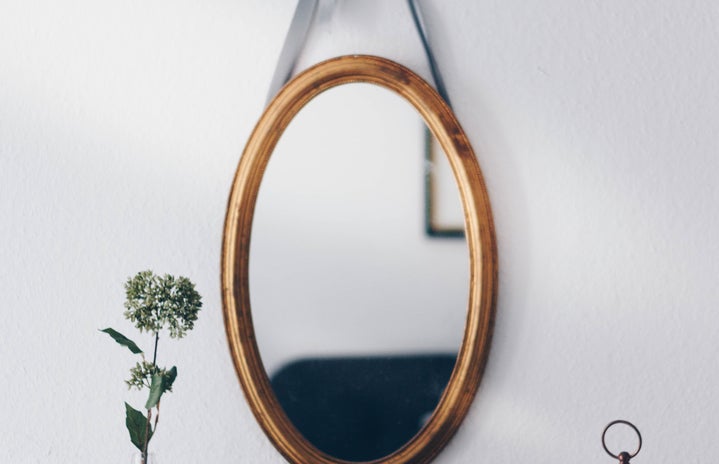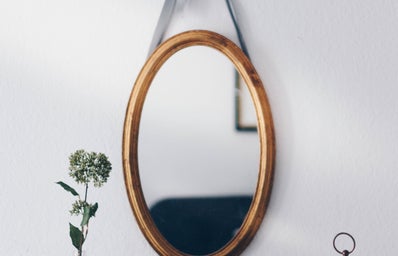At 13-years-old I was diagnosed with scoliosis. I guess at that sort of age, in Year 9, most girls are worried about trivial matters such as being “popular” at school, or busy obsessing over their latest crush. Admittedly, I was desperately doing all of these very normal things, whilst being told by a medical professional that I was very much abnormal.
My earliest memory of discomfort or realising that something wasn’t quite right with my back was during a triathlon competition. I remember I was on my bike, and the pain in my back was excruciating. It was like a stabbing in the lower-left side of my back. I just got on with the race and afterwards, I moaned to my mum about some back pain I had and out of curiosity, we went to see a physio. The physio massaged out the knots in this same area for about 40 minutes and I remember clenching my teeth and crying on the table because the pain felt so intense. The physio told me I had one leg longer than the other. Okay. Weird? How do you explain that?
Next stop: Addenbrookes Hospital. Dad, mum and me. We checked in at the Children’s ward, and the waiting room was full of little rattling toys and nursery rhyme books, with a rainbow painted on the wall. I remember wishing that day that I actually had something wrong with me. Quite frankly, it was a day off school, and I wanted to go back and tell everyone how traumatic the hospital had been. To tell my friends that it was something serious, and that hopefully, if I was really lucky, I might even have to stop swimming 8 times a week. Maybe, if this was serious enough, I could be a normal teenage girl who doesn’t smell of chlorine 24/7 and have a six-pack.
Unfortunately, this fantasy soon wore off. 8 years later, with countless X-rays, MRI scans, physio sessions and being on-and-off a waiting list for surgery, I wouldn’t wish scoliosis on anybody. I was 13 and I felt like my life was coming to a halt. I felt trapped in what should be an elderly person’s body, a body that was failing me much earlier than it was ever supposed to.
I’ve watched my parents cry in the hospital car park many times. “What are we going to do with you, Ellie?”. The same arguments, whether I should have an operation to fuse my spine into a “straight” position, with the risk of being paralysed for the rest of my life, or perhaps in 30 years’ time being told “Sorry, your spine has moved. We’ll have to operate on you again”. Or, whether I trial expensive non-surgical methods such as Schroth exercises and continue to review my scoliosis overtime. I certainly wasn’t spoilt for choice.
At every hospital appointment, the same question would be asked: “When are you having surgery?”, and I really didn’t want it at all. I was a very active child and the thought of having such a major operation at my age scared me. Months off school, learning how to walk again, managing the pain post-op, and even more physio. And to top it off, I would have a large scar running down from the top of my neck to the bottom of my back. Who wants that?
Orthopedists sold the operation as a cure for all my problems. A quick fix. I felt pressured to have the operation, and if I didn’t have it, then apparently, we were making the wrong decision.
One curve in my spine wasn’t quite enough, I actually have two: one at the top which makes my shoulder pop-out slightly, and another at the bottom, which creates a kink in my side. Together, they form a nice ‘S’ bend in X-ray images.
I’ve never particularly liked my body, I’ve found it far too skinny (no matter how much food I eat) and lanky. I just felt boyish. It’s interesting, too, what you notice after it’s very clearly pointed out to you, time after time after time again. When you’re asked to strip down to your underwear and stand in front of a male doctor as a teenage girl, with your parents right behind you, so your back can be poked and prodded, and measured to a percentage. “It doesn’t look much worse than last time. But it’s hard to say… It could still get worse”.
Well it always felt worse. It feels even more obvious every time I step foot outside of the hospital. And for this reason, I dread every single appointment. It feels like an ordinary person in the street could look at me and see my back condition too, when in reality, barely anyone even knows what scoliosis is.
I couldn’t tell you how many times I’ve had to explain to someone exactly what scoliosis is or define it in my own words. Put my own spin on it. I tend to say that I have a curved spine instead of a straight one. Whereas Google or any Doctor tend to say it’s an ‘abnormal curvature of the spine’.
It’s difficult to explain how it feels to be medically diagnosed as abnormal from a young age. Years of staring at my body, and fixating over how misshaped it looks, why couldn’t I just have a symmetrical figure, that hugs in tight at the waist? Instead, I have one hip that looks higher than the other and a rib that pops out into focus. I have wasted hours trying to correct this by standing in front of a mirror, and practising different standing positions to make my scoliosis look less obvious. I felt ugly. And alone.
It’s difficult to hear people complain about their “back pain” – I’m not saying that you don’t experience it, but I have it. Every. Single. Day. When I wake up in the morning, when a chair isn’t supportive enough, when I go for a walk, when I stand up for too long, when I lift things. Even say on a night-out, if my belt is too tight around my waist, or I’m dancing for a few hours. It’s not always a sharp pain, but it is always a nagging sensation. If I’m not staring at my body and picking apart its shape, then I can still feel my scoliosis, and so I’m constantly reminded that I have it. So, on the occasion that I do complain of having back pain, it must be a particularly bad day and it’s not at all like your back pain, that will inevitably go away in a few hours’ time. Mine is permanent: I see it and feel it.
Within the past few weeks, I’ve been scrolling Instagram for some relatable content, another real-life human with scoliosis that I could connect with amongst a world of seemingly “perfect” bodies. I’ve discovered a mini scoliosis community online, but this isn’t without its faults either. I struggle with the idea that we are ‘scoliosis warriors’ – why warriors? This sets up the expectation that scoliosis is some sort of heroic battle. But what are we fighting against, a curved spine? A corrective surgery? There’s nothing heroic about having scoliosis, and I wish that having a bent spine didn’t lead to an automatic response to straighten it. Why is this desire to have a perfectly straight spine so “normal”?
I’ll be turning 22 in August; I’ll be graduating from university and this is probably the most comfortable I’ve ever felt about my body. I still haven’t had an operation, and I don’t really intend to either at the moment. I’ve come to a point where I accept my curved spine and all its complications, but I don’t resent it. I can move, I can breathe, I can run, I can feel normal – I can do everything that you can do. And I think that scared 13-year-old girl should be very proud of how far she’s come.


